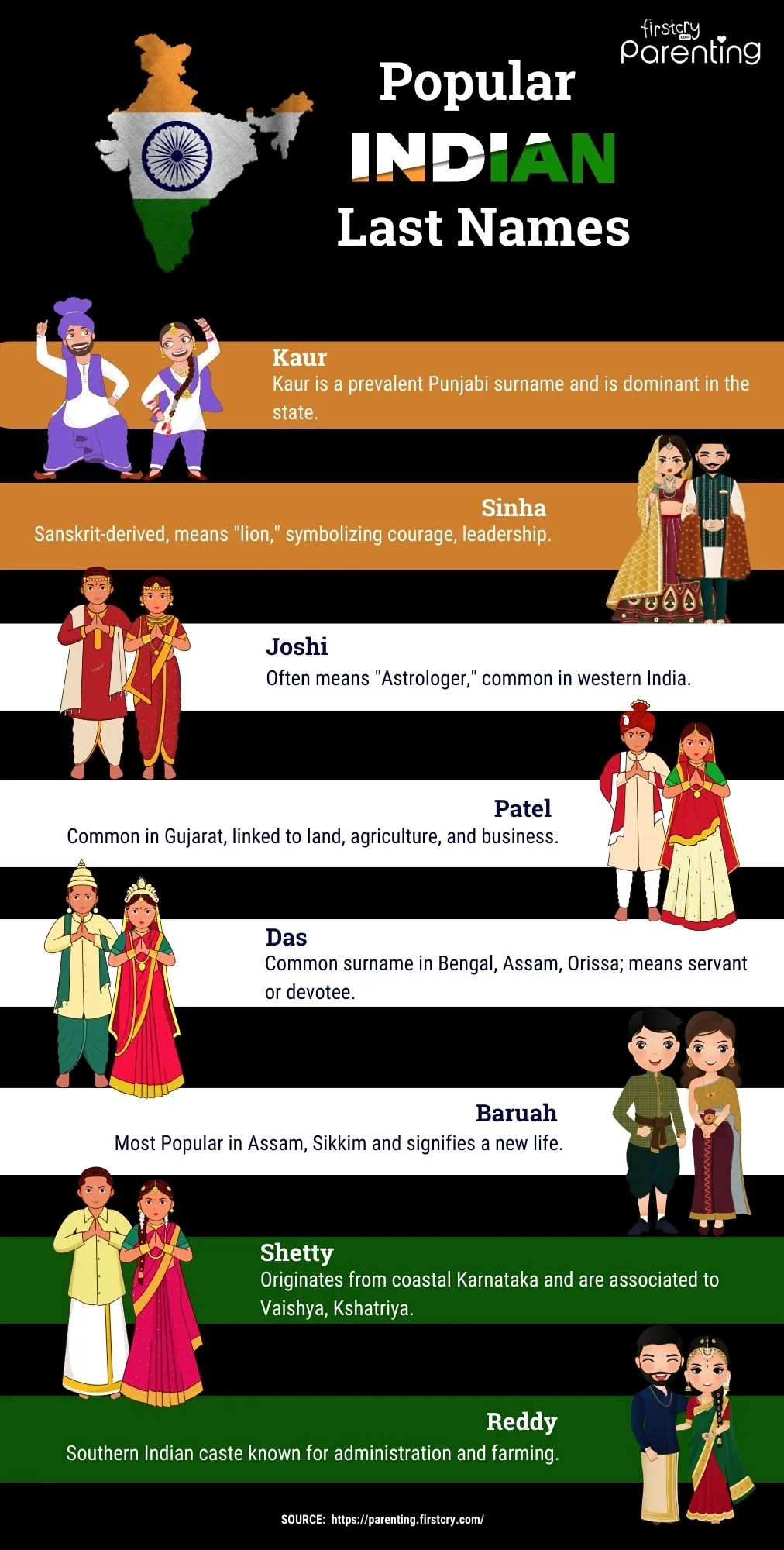India is a land of incredible diversity, where every state, community, and family carries a unique story. This rich tapestry is beautifully reflected in its vast array of surnames. From the bustling metropolises to the serene villages, family names often tell tales of ancestral professions, geographical origins, religious affiliations, or even a cherished forefather’s name.
Understanding the origins and prevalence of these last names offers a fascinating glimpse into the subcontinent’s history and social fabric. Some surnames are widespread across multiple regions, transcending linguistic and cultural boundaries, while others remain strongly associated with specific communities or states. They are more than just identifiers; they are markers of identity, heritage, and belonging.
If you’ve ever wondered about the most common Indian last names and what makes them so prevalent, you’re in for an interesting journey. We’re going to explore some of these widespread family names, delving into their potential meanings and the reasons behind their enduring popularity across India.
Unveiling Widespread Indian Family Names
- Singh
The surname Singh is arguably one of the most recognizable and widespread across India and among the Indian diaspora. Originating from the Sanskrit word ‘simha’, meaning lion, it was historically adopted by Rajput warriors and later famously by male members of the Sikh community, symbolizing bravery and strength. Its adoption by a wide range of communities has cemented its place as one of the most common Indian last names.
While most strongly associated with Punjab and the Sikh faith, where it is a mandatory part of a male’s name, Singh is also prevalent in states like Uttar Pradesh, Bihar, and Rajasthan, often indicating a martial or aristocratic lineage. Its universal appeal and powerful connotation have contributed to its immense popularity, making it a truly pan-Indian surname.

- Kumar
Kumar is another exceedingly common surname, derived from the Sanskrit word for prince, son, or young boy. It is often used as a middle name, particularly in North India, but frequently functions as a standalone surname as well. Its gentle meaning and widespread applicability have made it a favorite across various castes and communities.
The universality of Kumar lies in its association with youth and lineage, making it adaptable across a spectrum of social groups without strong ties to a specific profession or region. It is particularly common in states like Bihar, Uttar Pradesh, and Haryana, where it represents a significant portion of the population’s family names.
- Sharma
The surname Sharma originates from the Sanskrit word ‘sharma’, meaning joy or comfort, and is traditionally associated with the Brahmin priestly class. It is a highly prevalent surname, especially in North India, signifying a historical connection to learning, religious duties, and intellectual pursuits.
Sharma is particularly concentrated in states such as Uttar Pradesh, Rajasthan, Madhya Pradesh, and Himachal Pradesh. Despite its traditional caste association, its widespread adoption over centuries has made it a truly common Indian last name, often signifying a family’s ancestral ties to scholarly or spiritual roles within their communities.
- Yadav
Yadav is a prominent surname primarily associated with a large community that claims descent from Yadu, a mythical king and ancestor of Krishna. This makes it a significant name with strong historical and religious connotations, particularly among communities involved in agriculture and dairy farming.
Highly concentrated in North Indian states like Uttar Pradesh, Bihar, Haryana, and Madhya Pradesh, Yadav is more than just a surname; it often denotes a distinct social group with a shared heritage. Its widespread presence reflects the historical importance and demographic strength of these communities in the Indian heartland.
- Patel
The surname Patel is most strongly associated with the state of Gujarat and signifies a village headman or landholder, derived from the Gujarati word ‘patel’ meaning chief. It is an incredibly common name among the Gujarati community, both within India and among the global Indian diaspora.
Beyond Gujarat, Patel is also found in significant numbers in other parts of India, particularly where Gujarati communities have settled for trade or business. Its occupational origin highlights a historical connection to land management and administration, making it a powerful identifier for a community known for its entrepreneurial spirit.
- Shah
Shah is another highly common surname with Persian origins, meaning “king.” In India, it is predominantly associated with the Jain community and certain mercantile communities, particularly from Gujarat and Rajasthan. It denotes a history of trade, commerce, and often, affluence.
While prevalent in Gujarat and Rajasthan, Shah is also found in other Indian states where these trading communities have established themselves. Its historical connection to leadership and prosperity has made it a distinguished and widely recognized surname across the nation.
- Gupta
Gupta is a very common surname of Sanskrit origin, meaning “protector” or “secret.” Historically, it was a dynastic name for the powerful Gupta Empire. Today, it is predominantly associated with the Vaishya (merchant) community in North India, particularly in states like Uttar Pradesh, Bihar, and West Bengal.
The surname Gupta signifies a connection to trade, business, and administrative roles. Its long history and association with both imperial power and mercantile communities have ensured its enduring prevalence, making it one of the most common Indian last names reflecting economic and social heritage.
- Reddy
The surname Reddy is almost exclusively associated with the state of Andhra Pradesh and Telangana in South India. It signifies a traditional village headman, leader, or landlord, similar in function to the ‘Patel’ of Gujarat. The Reddy community has historically been a powerful landowning and agricultural community.
Its widespread prevalence in the Telugu-speaking regions reflects the community’s historical dominance in land ownership and local administration. Reddy is a strong marker of regional identity and historical power within South Indian society, representing a significant portion of the population.
- Mishra
Mishra, like Sharma, is a traditional Brahmin surname, predominantly found in North India, especially in Uttar Pradesh, Bihar, and Madhya Pradesh. It is derived from the Sanskrit word ‘mishra’, meaning mixed or honorable, and signifies a lineage of scholars and priests.
The prevalence of Mishra underscores the historical role of Brahmins in intellectual and religious leadership across these regions. It continues to be a very common surname, carrying with it a sense of traditional respect and scholarly heritage, much like other Brahminical surnames.
- Das
The surname Das, meaning “servant” or “devotee” in Sanskrit, is widely prevalent, particularly in Eastern India, notably in West Bengal, Odisha, and Assam. It often signifies a devotee of a deity or a humble servant, and its adoption spans across various communities and castes, including Kayasthas and other groups.
Its simple yet profound meaning has allowed it to be embraced by a broad spectrum of people, making it a truly pan-Indian surname that crosses community lines. While most concentrated in the East, its presence can be felt throughout the subcontinent, reflecting a sense of devotion or service.
- Khan
Khan is a surname of Central Asian origin, meaning “leader” or “ruler,” and is extremely common among Muslim communities across India. It was historically associated with Pashtun tribes and Mughal nobility but has been adopted by various Muslim groups over centuries.
Prevalent in virtually every state where Muslim communities reside, Khan is one of the most recognizable and widely used surnames. Its historical association with power and leadership, combined with its adoption by diverse Muslim populations, has cemented its place among the most widespread last names in India.
The fascinating array of surnames across India truly showcases the nation’s incredible cultural depth and historical layers. Each name, whether rooted in ancient Sanskrit, medieval Persian, or local dialect, carries a story of lineage, profession, region, or faith. These common family names are not just labels; they are enduring threads in the vast, vibrant tapestry of Indian identity, connecting individuals to their ancestors and to the broader narrative of the subcontinent.
Exploring these most common Indian last names reveals how deeply intertwined personal identity is with collective history. They remind us that behind every name lies a rich heritage, a unique journey that contributes to the beautiful mosaic that is India. As families continue to grow and move, these names serve as constant anchors to their past, ensuring that the legacy of their ancestors lives on through generations.



